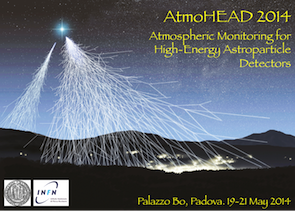Speaker
Mr
Christian Fruck
(MPI Munich)
Description
A method for analyzing returns of the custom-made 'micro'-LIDAR system, which is operated along side with the two MAGIC telescopes is presented. This method allows to calculate the transmission through the atmosperic boundary layer as well as thin cloud layers by applying exponential fits to regions in the signal that are dominated by Rayleigh scattering. Writing this real time transmission information into the data stream allows to apply atmospheric corrections in the MAGIC data analysis chain later on. Such corrections make it possible to extend the effective observation time of MAGIC under adverse atmospheric conditions and reduce the systematic errors of energy and flux in the data analysis. Further more it is possible to perform long-term studies of the observational conditions based on the LIDAR data.
Author
Mr
Christian Fruck
(MPI Munich)

